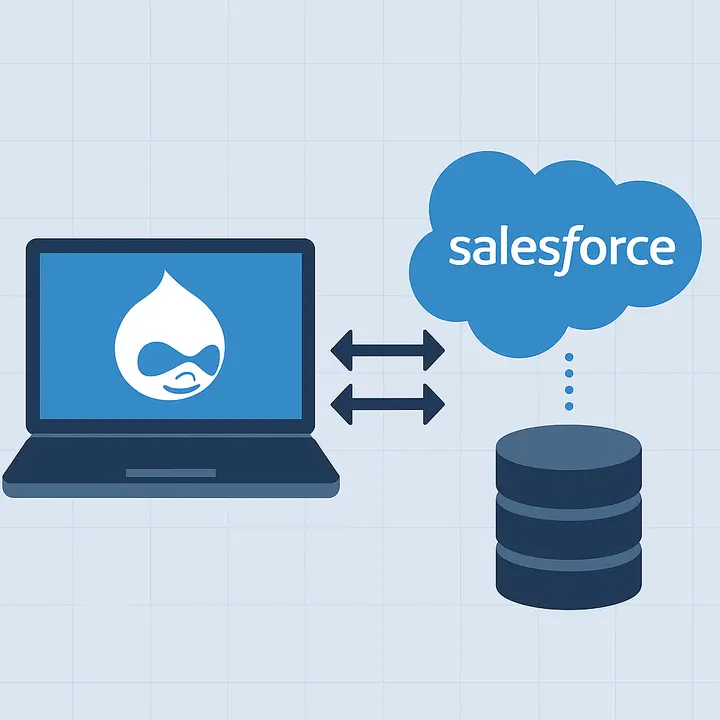What is Drupal?
Drupal is an open-source robust and highly flexible content management system (CMS) for website development and maintenance. As it becomes clear from the term CSM — Drupal is a perfect tool for creating and managing content online. Thanks to its modular structure, Drupal’s functionality can be easily extended and fine-tuned. As one of the most popular CSMs available on the market today, Drupal is widely used for one-page building to enterprise-level website development across industries.
What is Headless Drupal?
Before the development of the ‘headless’ concept, web developers built sites using monolithic architecture or, simply put, ‘coupled’ frameworks. Such coupled websites lack flexibility & capacity for data growth and turn the development process into a challenge.
In headless (decoupled) Drupal, the front-end (user interface) is developed separately from the back-end. Thus, it becomes possible to substitute the front-end for any other framework, for example, React.
Below, Drupfan web developers highlight key benefits of Headless Drupal:
Performance on the websites with monolithic architecture is poor while headless Drupal is responsible for quick content delivery. High page loading speed and overall website performance result in a positive user experience and high customer satisfaction rates.
Decoupled Drupal offers a high level of web security. Separated front- and back-ends make it harder for malicious attacks to invade the platform.
Headless architecture stores content on the back-end but allows adjusting an interface for multiple devices and channels.
- Flexible website building
Headless Drupal is more flexible in terms of front-end web development because Drupal on the front-end can be substituted by React or Vue frameworks.
- Seamless third-party integrations
An API-first approach helps web developers easily integrate 3rd party services into the system rather than build functionality from scratch.
In other words, headless Drupal manages all the data and functionality and doesn’t deal with the website’s interface and look.
What is React?
React is a popular JavaScript-based framework that is used for front-end web or app development. Thanks to its component-oriented structure, React lets developers handle web development in a very efficient and organized way.
With React as a front-end, you get higher performance and responsiveness: instead of updating the whole page when something changes, React simply modifies a certain part of the page. In addition, React allows web developers to reuse code elements which significantly reduces the time & effort necessary for the project delivery.
How Drupal and React Benefit Each Other in Web Development?
Although Drupal and React are 2 completely different tools, they serve as two parts of a mechanism that complement each other. In the Drupal & React combo, Drupal turns into an engine that handles all the functionality and features while React is responsible for visual representation.
Key Drupal features are functionality building, as well as content storage and management, while React is responsible for content visual representation and dynamic user interfaces. His combo allows you to build high-performing, robust, and flexible platforms that enhance user experience.
Here, Drupfan specialists outline the key advantages of Drupal & React integration:
- Drupal offers powerful back-end functionalities and flexible content management features.
- React provides interactive and dynamic user interfaces.
- Having the front-end built on React improves page loading speed and overall web performance.
- Content stored in Drupal can be reused and displayed across multiple channels.
- Front-end and back-end developers can work independently, leading to a faster development cycle.
- React allows the reuse of components on the website resulting in a more efficient development process.
- Rect ensures that the content is rendering properly which enhances Search Engine Optimization.
Summing Up
By integrating Drupal CMS with React framework, you combine Drupal’s powerful content management capabilities with React’s user-friendly interfaces. Thus, you get improved performance, high customer satisfaction rates, and, as a result, skyrocket conversions.
Your successful digital platform is closer than you think! Contact Drupfan today to discuss the specific requirements of your project. Gain the most out of Drupal and React integration!





